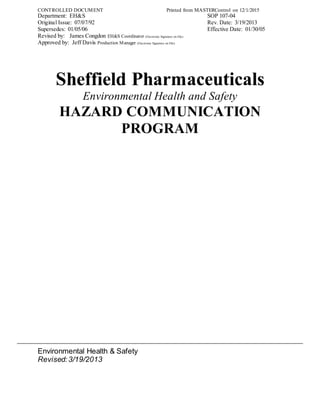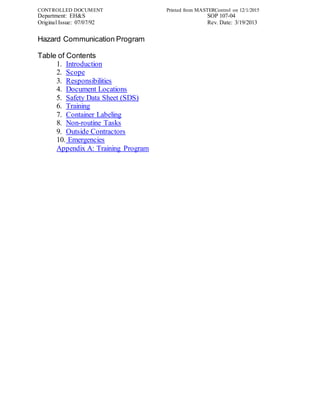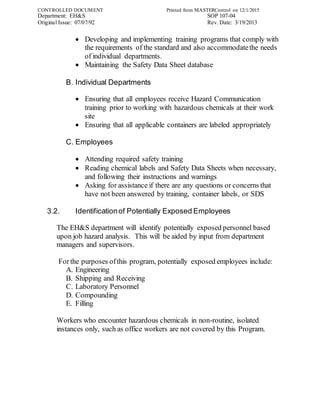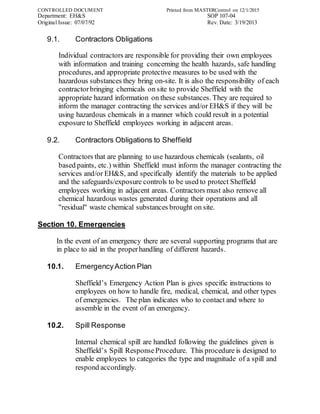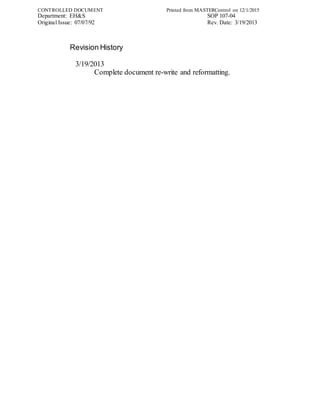This document outlines the Hazard Communication Program for Sheffield Pharmaceuticals. It describes the program's responsibilities, document locations, safety data sheet procedures, training requirements, container labeling, and emergency response. The program is designed to ensure employees are informed of chemical hazards and properly protected according to OSHA regulations.
